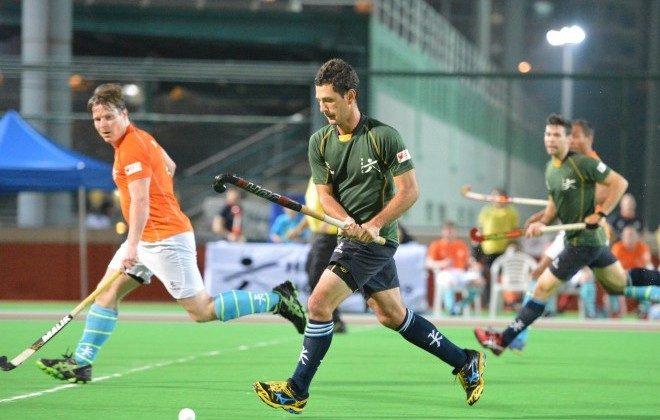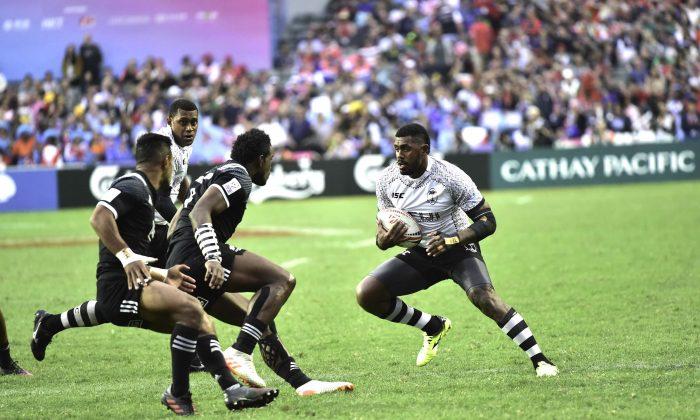International organising authorities are awaiting the outcomes of reports of Hockey 5’s games trialled for the first time ever during a tournament held in Hong Kong on the Easter weekend.
The Hockey 5’s format was trialled for the FIH (International Hockey Federation) in the carnival atmosphere of the HKFC Easter Hockey 6’s tournament by 25 top flight international players from Australia, Europe and Asia Pacific. It is to be used in the next Youth Olympics to be held in Nanjing, China, in 2014.
The reports from the event will aide in the decision-making process regarding further trials and official matches in the 5-person per team format, which is expected to make the sport more accessible to the uninitiated.
While opinions are divided as to whether the 5’s or 6’s format is the way forward, the rules for the Youth Olympics have already been issued by the FIH.
This explosive short format for field hockey played on a half-regulation size hockey pitch, is seen as a possible way for the future development and growth of the sport worldwide. The objective of Hockey 5’s is to allow flexibility so that it can be played on any surface, on different sized pitches and to have or not to have side restraining boards.
Flexibility in the rules makes the game playable in diverse localities and under varying conditions and makes it available to more people. Where not specified in detail, the rules of Field Hockey apply.
A few key points of the game:
• 55 metres by 41.7 metres pitch (half normal size).
• Three periods of 15 minutes of play
• Five players per side on the field at any time
• No drawn games (extra time)
• Scored from anywhere on the field
• One-on-one challenge instead of penalty corners.
The matches are exciting to watch. Fast, furious and demanding on the players’ fitness even on the slightly smaller than regulation pitch size used for the trial.
While it is hoped it will become very popular, the official FIH introduction to the rules stresses that it is not intended to replace the 11 a-side game.
“Hockey played with 11 players on a full size outdoor field will continue to be the main focus of the sport with Indoor Hockey as an alternative version of the game closely linked to the outdoor version,” the rules state.
Official feedback to the FIH will be given in due course by representative bodies after detailed discussions and a review of the trial. Initial feedback from players, spectators and officials has generally been positive, although rule changes are suggested by some and others have more deep-seated reservations.
While at the HKFC Easter 6’s several high profile international hockey players and officials shared their thoughts with The Epoch Times.
Michael Green (ex-German International):
“Before it was just on paper and now we have had the kick off in Hong Kong and I think it is a big success as we saw many scoring opportunities and many goals scored. So it can be a very exciting format.
“We have to tweak it [the format] and this tournament is very important for the input, but also in this year there will be the qualification tournaments played on all continents for the Youth Olympic Games and, therefore, we will get feedback from them as well and afterwards we have to do some amendments.
“I think we may be able to change it and inform the IOC at the beginning of next year 2014. So we have some months to prepare on this very hard and we need inputs from the tournaments.
“The size of the pitch here was excellent, it was foreseen to be wider and longer, but I think there is enough space how we did it here and, therefore, I would recommend this arrangement used here.
“We saw how the Aussies played here; they have already known the small game.
“They had the Super Series in Perth last year. They know how to play with side boards so this is very interesting.
Green also commented on the match time-periods.
“If you are real fit and you have the national teams playing it should be no problem to have three times 10 minutes, but it also depends on how many games you have per day.
“I am from Europe and in Germany we play a lot of indoor hockey; if you have more than two games a day it will be very tough for the players, but it also depends on the format during the competition.
“It is really important that you have this rule for interchanging where you have a break for two minutes and then come on again. It will be 10 or 11 players per side, but only 5 on the field at one time.
“I am just happy to have this kick-off event here.”
Green also commented that safety is all-important and that it needs to be looked at from that angle as well, however, others thought that it would be more of a problem at lower levels.
Sander van der Weide (ex-Holland International):
“I really liked the fives because you can score from everywhere, the ball doesn’t go out of the field so it stays in play [nearly] all of the time. There are a lot of goals you can score from everywhere so I think it is pretty attractive for spectators as well.
“I think safety is okay, especially with the international players as they know the game and they know what is going to happen. At a lower level maybe it could have a little problem.”
FIH Umpire: Lyle Williams:
“I think it is a tremendous format for both the spectators and the players.
“As an umpire it is awfully quick, but some of the changes in the rules like scoring from anywhere certainly make it more interesting.
“I like the Challenges instead of a short-corner. I think it brings the emphasis out on skill and I think it is a great addition to the hockey game.”
Williams agreed that safety at the lower levels is likely to be more important also.
“Look, the trouble is we play the game at different levels.
“You have seen the skill of the guys at international level and we have to just make sure that it is both safe for those guys and for the guys playing at fifth and sixth division. And that is a message we try to get across as umpires.
“We are looking for people to be able to control games and keep people safe and you have to just slightly adapt some of the rules to make sure that everybody can play.
“I think it is something they want to introduce more here especially for the juniors, it’s fast and it’s entertaining—a bit like Twenty20 [cricket] for hockey.
“I think there is still a big place for 11 a-side game in the [Summer] Olympics and I am a bit of a traditionalist like that, so I think I would prefer it to stay 11 a-side for the Olympics. However, with five a-side and shorter games you could get more countries to participate so that may be a consideration.”
Brenda Smith (HK Hockey Association Council member and Vice President):
“I thought it was very exciting and the crowd loved it, but I think we need to think carefully about should it be 5’s or 6’s.
“A lot of people in the crowd thought the sixes was a slightly better format than the fives. But the FIH are very keen to get feedback on this and I think they will be looking at footage of both the fives and sixes to see which way might be the best way forward.
“The players will give their feedback and the HKHA will give its feedback from the point of view of organisation and crowd enjoyment.
“The FIH is wanting to receive as much feedback as possible from this tournament because it will influence the way they go forward with the small game. The small game is important to the future of hockey.
“It is expensive to host 24 teams for two weeks to an Olympic Games, so for the future of the sport, we need to look at how costs can be controlled and how to get more countries to the top tournaments and for them to be able to afford to participate.
“But the 11 a-side format will remain for the 2016 Olympics.”





Friends Read Free